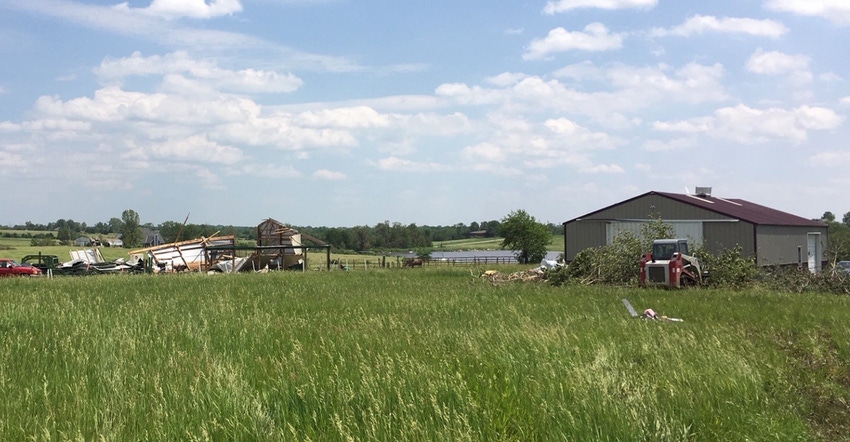June 15, 2019

Sponsored Content
Severe weather experienced in many parts of the country this season has focused attention on the ability of different building designs to help protect against storm damage. While no structure is totally immune to the most destructive of storms, different construction practices can make a difference.
For example, post-frame construction is a highly engineered wood-frame building system that features large, laminated columns instead of wood studs, steel framing or concrete masonry. In the aftermath of hurricanes, tornados, and snowstorms, post-frame buildings often stand tall amidst the surrounding rubble, due to key advantages of design methods, technology and advances in construction components.
It all comes down to the advanced engineering of the wood-frame structure in post-frame construction, according to Dan Nyberg, training manager for Morton Buildings. “One common misconception is that a steel building is stronger than wood, and while it’s true that the material by itself may exhibit greater strength, you need to compare the structures as a whole,” says Nyberg.
He explains that diaphragm building techniques, which dictate how building components work together to transfer lateral loads to the foundation, account for the stability a post-frame building offers across an extended life cycle, even for buildings in excess of 100 feet. Steel buildings derive their strength from a combination of the frame and panels. If either is compromised, the entire building is compromised.
“A post-frame building forms a tremendously strong structure that efficiently resists wind and seismic forces,” Nyberg states. “Through the quality design and materials of the framing system, these buildings provide higher snow and wind load protection.”
He recommends that for added durability against climate conditions, ask your builder about the source of their materials. Who manufactures and roll-forms it? What kind of steel do they use and are the steel panels installed via welding or fastened with screws and nails? What kind of warranty is offered for the building components?
Nyberg says Morton Buildings promotes durability by:
Roll-forming its own pre-engineered, commercial quality Hi-Rib™ steel. The steel is .019 inches thick, or 26-gauge, with a one-inch tall major rib, providing added strength over the typical steel that is .015 inches thick with five-eighths of an inch major rib. Two minor ribs between each one-inch major rib are the strongest architectural shape for withstanding water and weight.
�Making trusses from premium-grade 2450 MSR lumber, which have been evaluated by mechanical stress-rating equipment for stiffness to determine the lumber’s strength. To reduce roof leaks and add rigidity and uniformity, the company uses smart, continuous pre-drilled purlins—like those used in bridge construction. In addition, its exclusive concrete Morton Foundation System removes wood from the ground and replaces it with specially designed components, providing further durability.
Handling warranties directly, including labor and materials, unlike the pass-through warranties offered by most building companies. A 50-year snow warranty is offered for most buildings with no weight limit; 5-year wind warranty with no velocity limit; and a 35-year FLUOROFLEX® paint warranty for flaking, peeling, chalking and color change (excludes livestock buildings). For the company to offer warranties like these, it has to ensure delivery of the best product available.
Morton has documented numerous customer stories that detail how their buildings withstood the storm damage when others did not. Learn more here.
About the Author(s)
You May Also Like




